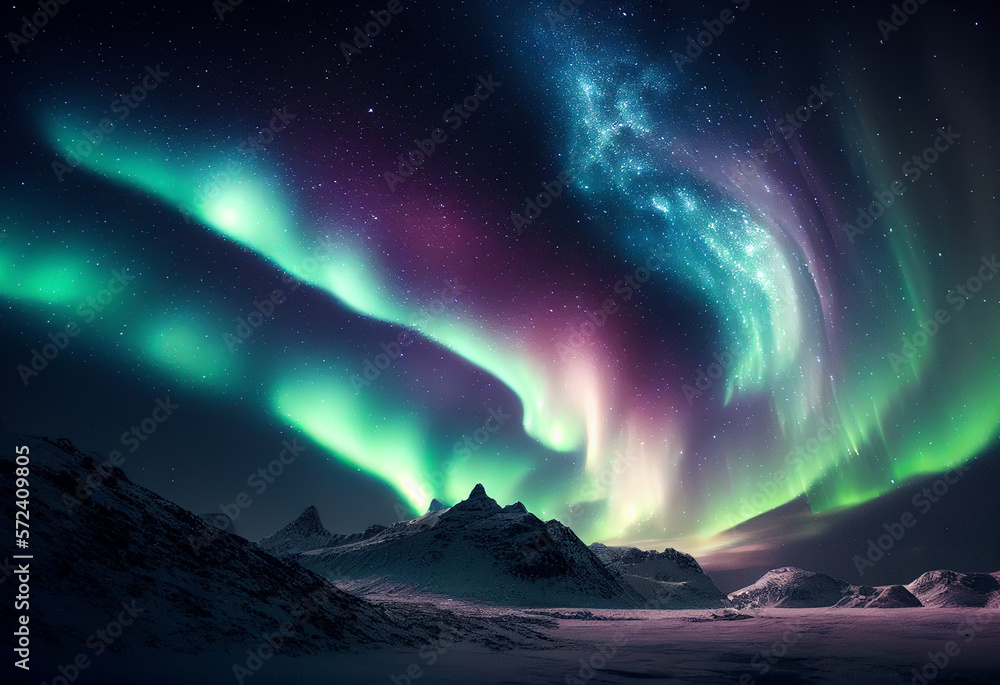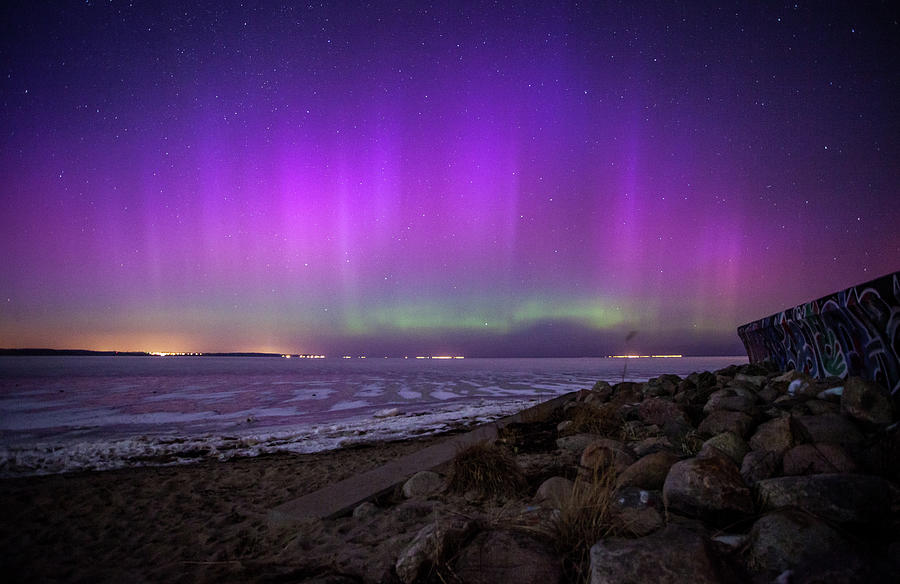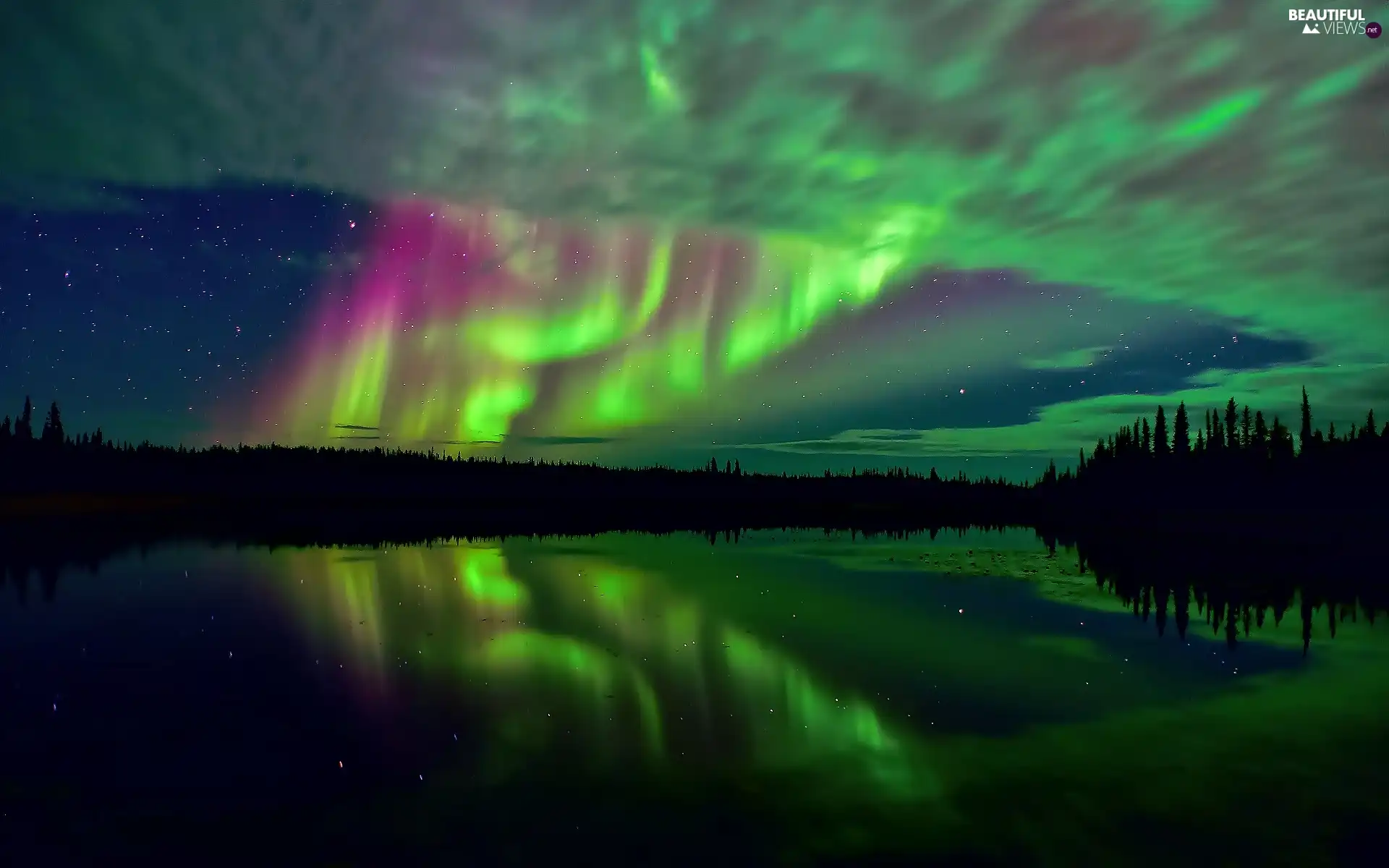Have you ever stopped to think about the incredible light shows our planet puts on? There's this truly spectacular event, a kind of natural sky dance, that happens way up high in Earth's atmosphere. It's often called the aurora, and seeing it can feel like a once-in-a-lifetime kind of moment. People from all over the globe are drawn to its beauty, hoping to catch a glimpse of those shimmering colors. It's a phenomenon that speaks to something deep inside us, a quiet wonder that reminds us just how amazing the natural world truly is.
This celestial display, sometimes known as the northern or southern lights, appears mostly near the Earth's poles. It’s a luminous happening, a glow that stretches across the night sky, making for a truly memorable experience. People who live in places like Alaska, Canada, or Scandinavia often get to see it more regularly, but when conditions are just right, it can sometimes be spotted further away from the usual spots. It's a reminder, too it's almost, of the constant, invisible forces at play around our planet.
For those curious about these sky spectacles, there's quite a bit to explore. From what makes them happen to where and when you might actually spot them, a lot of fascinating details come into play. People are often wondering if they can see it tonight or perhaps tomorrow night, and there are even ways to get a bit of a heads-up on its potential appearance. It's really quite a popular thing to keep an eye out for, especially as we get closer to times when the sun is particularly active.
Table of Contents
- What exactly is this aurora polariz?
- Where do we look for the aurora polariz?
- When is the best time to see aurora polariz?
- How does the aurora polariz come to be?
- Predicting the aurora polariz's appearance
- Can you help track the aurora polariz?
- The wonder of aurora polariz
- Planning your aurora polariz encounter
What exactly is this aurora polariz?
So, what exactly are we talking about when we mention the aurora? Well, it's a truly bright happening, a luminous display that takes place high above us in Earth's upper air layers. You often hear it called the northern lights, or aurora borealis, when it's seen in the top part of the world. Down south, it's the southern lights, or aurora australis. It's a natural light show, a kind of glowing dance, that makes the night sky come alive with color. It's really quite something to behold, a spectacle that captivates anyone who gets to witness it.
These lights can show up in a whole range of colors, like greens, pinks, purples, and sometimes even reds. They move and shift, sometimes like curtains swaying in a gentle breeze, other times like quick, darting beams. It's not just a steady glow; it has a dynamic quality, a living movement that adds to its charm. People often describe it as one of nature's most breathtaking sights, and it's easy to see why. The way the colors play across the dark canvas of the sky is, honestly, just stunning.
Where do we look for the aurora polariz?
When you're hoping to catch a glimpse of this aurora polariz, your best bet is usually to head toward the very top or very bottom parts of our planet. These areas are called high latitudes, and that's where the conditions are most often just right for the lights to show up. Think places like the far reaches of Canada, Alaska, Norway, Sweden, Finland, and Iceland in the northern part of the globe. Down south, places like Antarctica or the very southern tips of South America and Australia are where you might spot the southern lights. It’s a geographical sweet spot, you know, for these sky dances.
The aurora appears in both the northern and southern hemispheres, though the northern lights, the aurora borealis, are perhaps a bit more widely known and talked about. This is partly because there are more populated landmasses in the northern high latitudes, making it a bit easier for people to get there and look up. Regardless of which pole you're near, the principle behind the aurora polariz showing up is pretty much the same. It's all about how solar particles interact with our planet's protective magnetic bubble.
When is the best time to see aurora polariz?
So, if you're keen to see the aurora, timing is, quite frankly, a big part of it. The visibility of these lights is tied to what's happening on the sun. Our sun goes through a cycle of activity, roughly eleven years long, and during its most active periods, there are more solar events that send particles our way. For instance, 2025 is looking like a particularly good year for aurora viewing, which has skywatchers pretty excited. That's when the sun is expected to be quite busy, offering more chances for these amazing displays.
Beyond the solar cycle, there are other considerations for seeing the aurora. You need a dark sky, which means getting away from city lights that create light pollution. The moon phase can also make a difference; a full moon can wash out fainter displays. And, of course, clear skies are an absolute must. You can't see the aurora through clouds, can you? Typically, the best hours to look are between 10 PM and 2 AM local time, but they can appear earlier or later depending on the activity level. It's a bit like waiting for a special show, really, where all the conditions need to align.
How does the aurora polariz come to be?
The science behind the aurora polariz is actually pretty cool, and it involves a bit of a cosmic ballet between our sun and Earth. It all starts with the sun releasing a stream of tiny, charged bits of matter, often called the solar wind. Sometimes, the sun also has bigger outbursts, like solar flares or coronal mass ejections, which send even more of these particles hurtling through space toward us. These particles are moving incredibly fast, and they carry a lot of energy.
As these charged bits from the sun approach Earth, they run into our planet's natural shield: its magnetic field. This field acts like a big, invisible bubble that mostly deflects these particles. However, at the North and South poles, the magnetic field lines dip down into the atmosphere. This means some of those solar particles get funneled along these lines, heading right toward the Earth's upper air layers near the poles. It's kind of like a funnel, guiding them to specific spots, you know?
Once these energetic particles hit Earth's atmosphere, they collide with gases already present there, like oxygen and nitrogen. When these collisions happen, the atoms and molecules of the gases get excited, gaining extra energy. But they can't hold onto that extra energy for long. To get rid of it, they release it in the form of light. Different gases, and different altitudes, produce different colors. Oxygen often gives off green and red light, while nitrogen tends to create blue and purple hues. This process is what creates the shimmering, colorful aurora polariz we see, a truly beautiful result of these tiny interactions.
Predicting the aurora polariz's appearance
People are often very interested in knowing if they can catch a glimpse of the aurora tonight or tomorrow night. Luckily, there are ways to get a sense of its potential visibility. Forecasts are put together that give an idea of the aurora's intensity and where it might be seen. These predictions take into account solar activity and other atmospheric conditions. While it's not an exact science, as the sun can be a bit unpredictable, these forecasts provide a very helpful guide for hopeful skywatchers.
There are pages and interactive maps that show predictions for the aurora's visibility. These tools can tell you where the northern lights might be seen over places like North America, for example, and how strong the display might be. They use data from satellites and ground-based sensors to give you the most current information. Checking these resources can really help you plan if you're hoping to experience the aurora polariz for yourself. It's a bit like checking the weather, but for celestial events.
Can you help track the aurora polariz?
It might surprise you to learn that regular people, just like you, can actually play a part in tracking the aurora. There's a cool project called Aurorasaurus, which is a citizen science effort. What that means is that people who see the aurora can report their sightings, sharing where and when they saw the lights. This information is then used by scientists to get a better overall picture of aurora activity. It helps them understand the phenomenon more completely.
Reporting your sightings to a site like Aurorasaurus is pretty straightforward. You just share the details of what you saw, and this helps to build a bigger database of aurora appearances. It’s a way for anyone with an interest to contribute to scientific understanding, and it also helps other people who are looking for the lights know where they might have a chance to see them. So, if you ever do witness the aurora polariz, you could actually help others experience it too, which is kind of neat, isn't it?
The wonder of aurora polariz
There's something truly special about seeing the aurora polariz with your own eyes. It's a natural wonder that often leaves people speechless, a moment that feels truly grand. The way the lights dance and change, sometimes slowly, sometimes with a quick burst of energy, creates a feeling of deep awe. It's a reminder of the vastness and beauty of the universe, and our place within it. Many people consider it a bucket-list item, a once-in-a-lifetime kind of experience that stays with them long after the lights have faded.
The experience is not just about the visual spectacle; it's also about the quiet, the cold air, and the feeling of being under an immense, star-filled sky. It's a moment of connection with something bigger than ourselves, a truly humbling experience. For those who chase these lights, the reward is often far greater than the effort. It's a chance to witness something profoundly beautiful, something that reminds us of the magic that exists in the natural world.
Planning your aurora polariz encounter
If you're thinking about planning a trip specifically to see the aurora polariz, there are a few things to keep in mind to make the most of your adventure. First, choose a location within the auroral oval, those high-latitude areas we talked about earlier. Then, consider the time of year; winter months often offer longer periods of darkness, which is helpful. Remember to check those aurora forecasts closer to your travel dates, as they can change quite a bit.
Getting away from city lights is really important for a good view, so look for remote spots with wide-open skies. Dress warmly, as it can get very cold in these northern or southern regions, especially at night. And, naturally, be patient. The aurora can be elusive, appearing when you least expect it, or not at all. But when it does show up, the wait is absolutely worth it. It’s an experience that truly sticks with you.



Detail Author:
- Name : Dr. Lee Koepp Sr.
- Username : walsh.izaiah
- Email : neva33@yahoo.com
- Birthdate : 2004-09-27
- Address : 9027 Anastasia Tunnel Emmerichland, MO 39896-0079
- Phone : (906) 984-4769
- Company : Hills-Beahan
- Job : Multi-Media Artist
- Bio : Eos magnam culpa est veniam. Officia qui pariatur qui sapiente eum. Placeat velit quae perspiciatis veniam. Aperiam quia in dolorem quia.
Socials
facebook:
- url : https://facebook.com/flatley1997
- username : flatley1997
- bio : Aut accusamus facilis vel consequatur.
- followers : 3823
- following : 1008
instagram:
- url : https://instagram.com/jarrell_flatley
- username : jarrell_flatley
- bio : Vitae voluptates quasi sit deserunt repellendus nihil. Nostrum aut illum dolore qui alias.
- followers : 5323
- following : 2715
twitter:
- url : https://twitter.com/jarrell_flatley
- username : jarrell_flatley
- bio : Ad voluptate earum omnis. Consequatur deserunt aut est dicta. Quasi autem ut ut inventore odit natus est.
- followers : 3003
- following : 721
tiktok:
- url : https://tiktok.com/@jarrell7044
- username : jarrell7044
- bio : Libero repellendus quod aspernatur voluptatem.
- followers : 5080
- following : 2359

